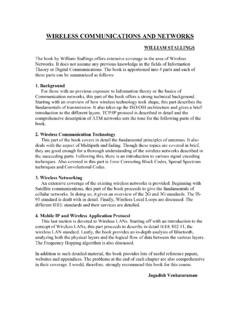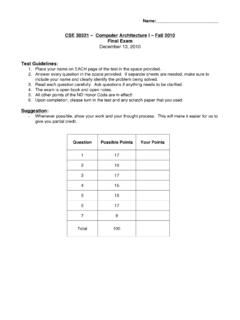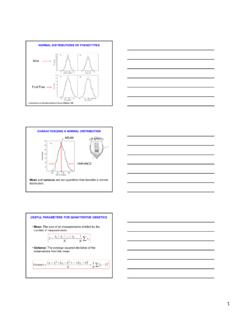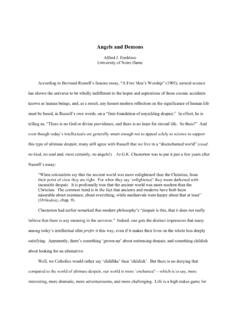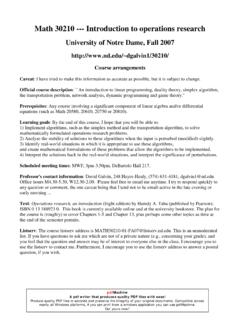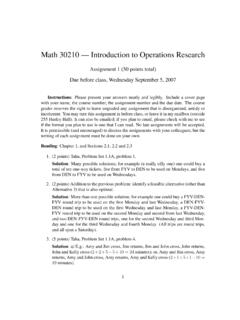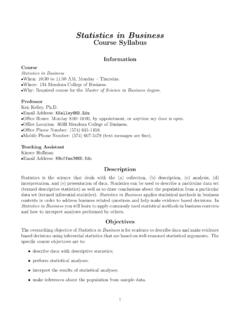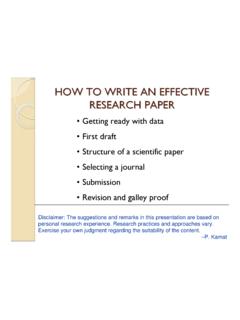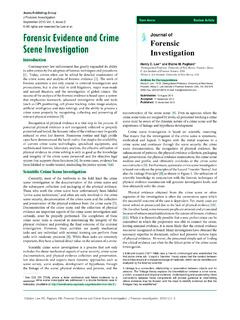Transcription of THEORIES OF HAPPINESS - University of Notre Dame
1 Paper presented at conference on New Directions in the Study of HAPPINESS : United States and International Perspectives , University of Notre Dame, USA, October 22-24 2006 First draft, October 2006 HOW DO WE ASSESS HOW HAPPY WE ARE? Tenets, implications and tenability of three THEORIES Ruut Veenhoven1 Erasmus University Rotterdam, The Netherlands, E-mail: ABSTRACT Utilitarian moral philosophy holds that we should aim at greater HAPPINESS for a greater number. Yet two THEORIES about how we assess how happy we are imply that there is not much value in HAPPINESS and that HAPPINESS cannot de raised lastingly. These two THEORIES are: (1) Set-point theory, which holds that we are mentally programmed for a certain degree of HAPPINESS , and (2) Comparison theory holding that HAPPINESS results from a rational mental calculus involving comparison with standard of the good life.
2 An alternative mental theory that fit better with utilitarian creed is the (3) Affect theory that HAPPINESS depends on unreasoned emotional experience, which reflects gratification of needs. These THEORIES are described, their theoretical plausibility is discussed and the empirical support evaluated. It is concluded that the first two THEORIES fall short as a general explanation. HAPPINESS seems to be inferred from how we feel in the first place. Hence there is no reality ground for rejecting the greatest HAPPINESS principle as a moral lead. THE PROBLEM HAPPINESS is a highly valued in present day society. Not only do people aim at HAPPINESS in their own life but there is also growing support for the idea that we care for the HAPPINESS of other people and that governments should aim at creating greater HAPPINESS for a greater number of citizens (Bentham 1789).
3 This classic philosophy is not only more accepted these days, but also more practicable, now that scientific research provides more view on the conditions for HAPPINESS (Veenhoven 2004). In that context, HAPPINESS is commonly understood as how much one likes the life one lives, or more formally, the degree to which one evaluates one s life-as-a-whole positively. A central element in this definition is subjective evaluation or liking of life, also referred to as satisfaction with life. These words refer to a mental state but leave some ambiguity about the precise nature of that state. That question is differently answered in three THEORIES linked to different THEORIES about how we evaluate life. 1 Set-point theory sees the evaluation as a stable attitude towards life and focuses more on the mental processes that maintain this attitude than on the processes that have brought it about.
4 Comparison theory sees evaluation rather as a continuous judgment process involving the comparison of perceptions of life-as-it-is with notions of how-life-should be. Affect theory sees HAPPINESS also as a continuous mental process, but now as an appraisal of how well one feels usually. These different descriptive THEORIES of how we assess how happy we are have great implications for prescriptive THEORIES of HAPPINESS . Set-point theory, and to a lesser extend also comparison theory, implies that there is little value in HAPPINESS and that there is also little chance of furthering HAPPINESS enduringly and this goes against the utilitarian tenet that we should aim at greater HAPPINESS for a greater number. This begs the question whether these THEORIES adequately reflect reality or not.
5 Do they apply at all, and if so, do they apply equally well or do some apply more than others? Over the last 15 years I have addressed these questions in several publications (Veenhoven 1991, 1994, 1995, 1997). In this chapter I develop the argumentation further, linking up with an evolutional perspective and take new empirical findings into consideration. I will also reflect on Cummins (19??) recent homeostatic theory of HAPPINESS . Below I will start with a closer look at the concept of HAPPINESS and next review each of the above mentioned THEORIES about how we assess how happy we are. Each of these THEORIES I will be discussed in the following way. First I describe the main tenets and variations. I then discuss in more detail what moral implications these THEORIES have.
6 Next I will evaluate each of these views by considering their theoretical plausibility and the empirical support. I start with a precise definition of HAPPINESS . 22 CONCEPT OF HAPPINESS The word HAPPINESS is used in different meanings that are often mixed up. To avoid such confusion, I will review the main connotations and select one of these, which I will analyze in more detail. Meanings of the word When used in a broad sense, the word HAPPINESS is synonymous with 'quality of life' or 'well-being'. In this meaning it denotes that life is good, but does not specify what is good about life. The word is also used in more specific ways, and these can be clarified with the help of the classification of qualities of life presented in Figure 1.
7 Figure 1 Four qualities of life Outer qualities Inner qualities Life-chances Livability of environment Life-ability of the person Life-results Utility of life Satisfaction Source: Veenhoven 2000 Four qualities of life This classification of meanings depends on two distinctions. Vertically there is a difference between chances for a good life and actual outcomes of life. Horizontally there is a distinction between 'external' and 'internal' qualities. Together, these distinctions mark four qualities of life, all of which have been denoted by the word ' HAPPINESS '. Livability of the environment The left top quadrant denotes the meaning of good living conditions. Often the terms 'quality-of-life' and 'wellbeing' are used in this particular meaning, especially in the writings of ecologists and sociologists.
8 Economists sometimes use the term 'welfare' for this meaning. 'Livability' is a better word, because it refers explicitly to a characteristic of the environment. Politicians and social reformers typically stress this quality of life and sometimes refer to it as HAPPINESS . I rather see it as a condition for HAPPINESS and not HAPPINESS as such. One can live in excellent circumstances but still be unhappy, because of an inability to reap the chances Life-ability of the person 3 The right top quadrant denotes inner life-chances. That is: how well we are equipped to cope with the problems of life. This aspect of the good life is also known by different names. Especially doctors and psychologists also use the terms 'quality of life' and 'wellbeing' to denote this specific meaning.
9 There are more names however. In biology the phenomenon is referred to as 'adaptive potential'. On other occasions it is denoted by the medical term 'health', in the medium variant of the word2. Sen (1992) calls this quality of life variant 'capability'. I prefer the simple term 'life-ability', which contrasts elegantly with 'livability'. This quality of life is central in the thinking of therapists and educators. Yet I also see this as a (possible) prerequisite for HAPPINESS and not as HAPPINESS itself. Even a perfect person will be unhappy when living in Hell. Utility of life The left bottom quadrant represents the notion that a good life must be good for something more than itself.
10 This presumes some higher value, such as ecological preservation or cultural development. Moral advisors emphasize this quality of life. This usefulness of life has also been denoted with the word HAPPINESS , but again I do not follow that use of words. I my language one can lead a useful life but still be unhappy. Satisfaction with life Finally, the bottom right quadrant represents the inner outcomes of life. That is the quality in the eye of the beholder. As we deal with conscious humans this quality boils down to subjective appreciation of life. This is commonly referred to by terms such as 'subjective wellbeing', 'life-satisfaction' and also HAPPINESS . I follow that latter use of the word.
